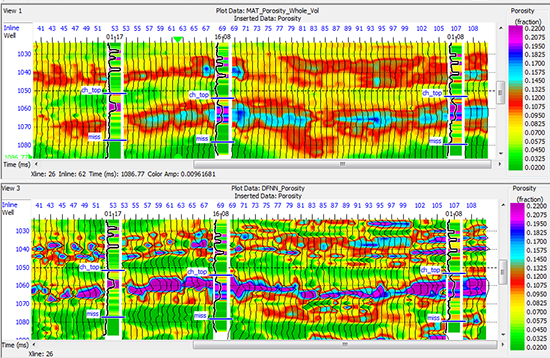Augmenting reservoir characterization with machine learning
Paris, France | Sep 17, 2019
Empowering geoscientists with the latest machine learning toolkit and innovative software on the Azure Cloud
Machine learning continues to make the headlines at industry events this year with dedicated workshops and technical sessions. While machine learning offers opportunities to potentially revolutionise geoscience workflows, not everyone is an expert practitioner capable of taking full advantage of the latest developments.
CGG GeoSoftware has a well-established track record of taking new technologies and making them accessible to the industry, for generalists and experts alike. As the potential of the rapidly evolving machine learning toolkit became apparent, it became a priority to “democratize” it through the software. The result is a machine learning ecosystem which provides open access to data and support for the use of external Python scripts across the whole suite of products, from petrophysics to advanced interpretation and seismic reservoir characterization.
Python-scripted machine learning lets experts and data scientists completely customize reservoir characterization workflows with their own proprietary code. For the G&G generalist, carefully selected pre-built recipes using intuitive graphical interfaces augment their workflows. Many tasks can now be completed more quickly and with more detailed results; for example, well log editing and petrophysical analysis, facies classification and reservoir property prediction. Analytical tools such as Gaussian mixture modeling (GMM) clustering and hierarchical agglomerative clustering are available for routine use. Results can be easily understood by using an array of readily available visualization tools. The same Python Ecosystem will be accessible in HampsonRussell and Jason products in the coming releases and is enhanced to include new data types such as seismic volumes, seismic attributes along wellbores and interpretations.
Twenty years ago, before “Machine Learning” was a commonly used term, HampsonRussell released the first commercial Neural Network-based approach for reservoir characterization. In this pioneering launch, HampsonRussell’s Emerge reservoir attribute prediction module included multi-linear regression, the probabilistic neural network and the single layer feed-forward neural network. These techniques continue to be used for predicting reservoir attributes from seismic attributes, such as pre-stack inversion results and amplitude, frequency and phase volumes. Two decades on, “Deep Learning” technology has now been added to Emerge to improve reservoir property prediction using deep feed-forward neural networks, which is producing an uplift in results compared to the previous generation of techniques.
As well as offering the latest technology in its new releases, CGG GeoSoftware is migrating its software to the cloud to provide greater opportunity for collaboration. The cloud offers more than just data storage – cloud computing provides scalable and flexible solutions to compute-intensive reservoir characterization workflows and very large projects. Through technical collaboration with Microsoft, the latest GeoSoftware releases run seamlessly in the Microsoft Azure Cloud Environment. Other major cloud platforms will follow soon.
To get the full picture, join CGG on booth #3347 on Tuesday at 3:30 for a presentation on machine learning with Brian Russell, then stay for a Happy Hour discussion on GeoSoftware’s roadmap to the cloud and a live software demonstration in Azure. For more information about all our activities at SEG San Antonio 2019, visit cgg.com/seg19
As published in the SEG Daily News

About CGG
CGG (www.cgg.com) is a global geoscience technology leader. Employing around 3,700 people worldwide, CGG provides a comprehensive range of data, products, services and solutions that support our clients to more efficiently and responsibly solve complex natural resource, environmental and infrastructure challenges. CGG is listed on the Euronext Paris SA (ISIN: 0013181864).